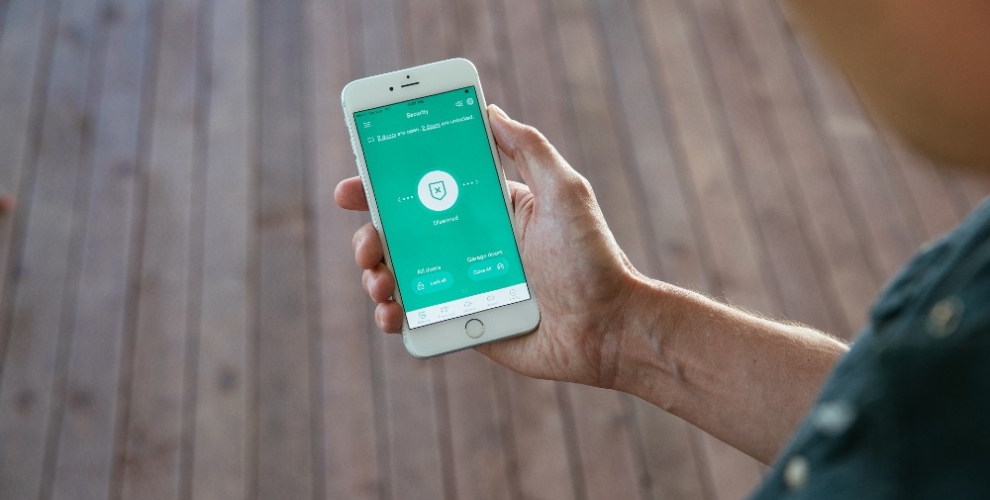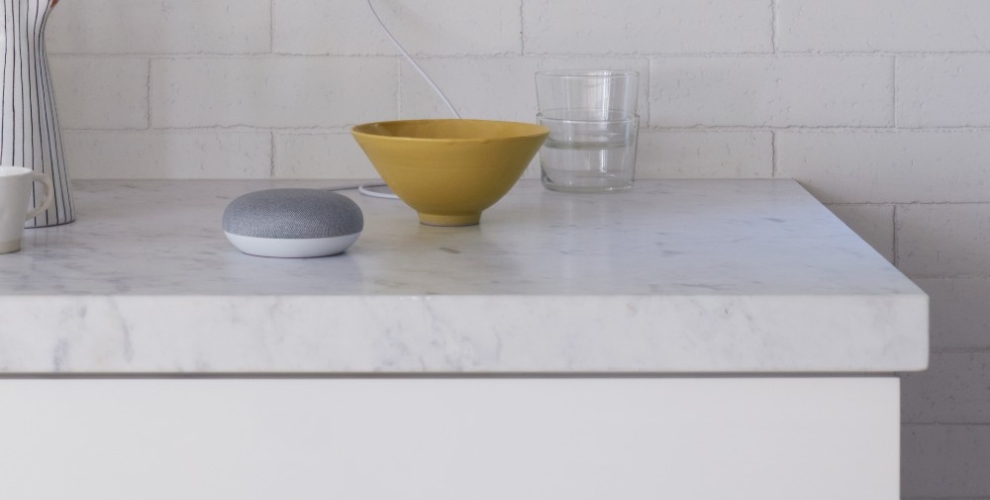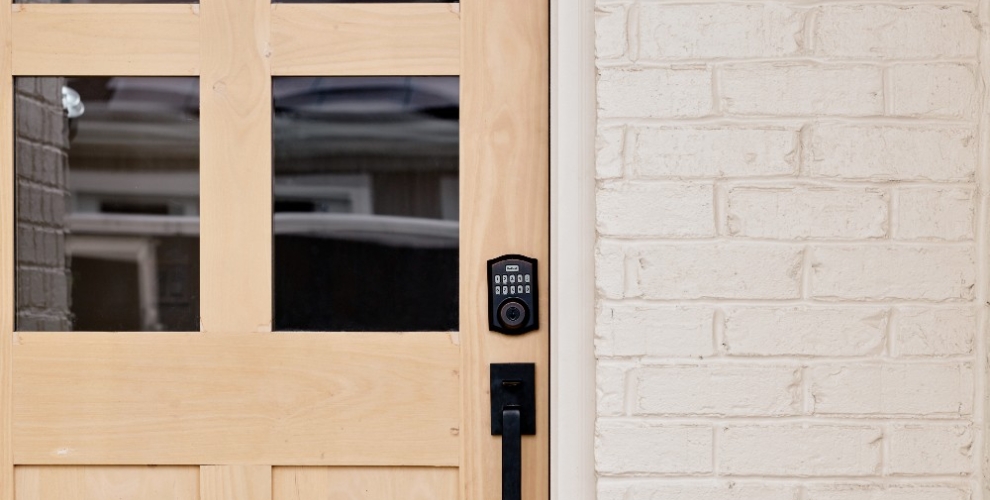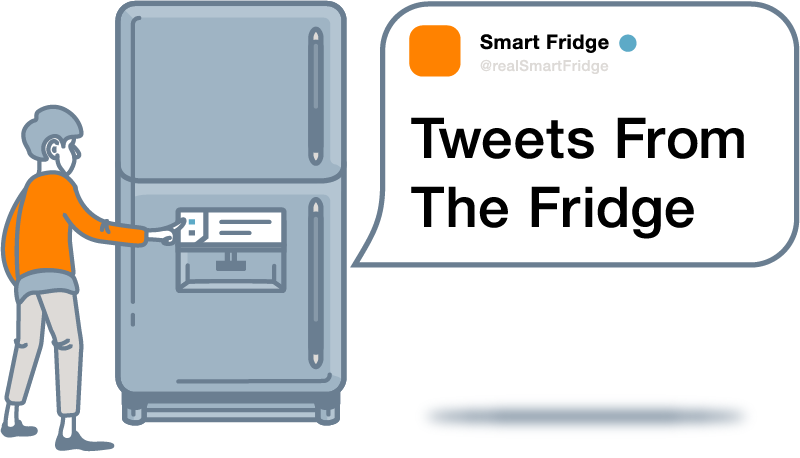
Samsung experienced major growing pains in their first major smart refrigerator release. Their oversight highlighted why smart fridges are often seen as a sideshow attraction more than a necessary next step in tech. When the Korean company introduced their newest offering at CES 2017, the Family Hub 2.0, I couldn’t help but wonder if they had worked out the kinks.
Is EVERYTHING smart these days?
If you take a quick look into the current world of technological innovations, you’ll notice one common thread nearly every major tech giant follows: making existing products ‘smart.’
The world of consumer electronics has always been a slave to jumping on the latest trends and buzzwords. It’s a bit premature to be setting ‘smart technology’ as the next milestone for every electronic device, but that’s not stopping most tech companies.
It seems the tech world as a whole has skipped an important part of any industrial race: deciding what we’re running towards.
The tech world has yet to define the word smart.
That minor detail hasn’t stopped many of the world’s largest tech companies from shipping ‘smart’ products. Some products clearly deserve the distinction of ‘smart,’ like self-driving cars and advanced algorithms used in machine learning. But for as many good examples of smart technology we see, there are a plethora of products that bear the crest of being ‘smart’ without having any clear features that make it any smarter than its basic consumer form.
Are smart refrigerators really smart? What about smart watches? Or smart TVs? The real question is what qualifications actually make a gadget ‘smart?’
What makes smart technology smart?
Harrison Jenkins, the Director of Product Management at Vivint warns those in the tech world to be careful what we label as smart. In an interview where we discussed his thoughts about upcoming innovations in the world of smart hometechnology, he said:
“[smart technology] isn’t just something we control remotely with our voice or with a smartphone—it’s actually something we’re interacting with in meaningful ways.”
That’s a pretty simplistic way of drawing a line in the sand. Unfortunately, that leaves the definition of ‘meaningful interaction’ open for interpretation. To take the overused tag out of the arena of marketing jargon and turn it into a meaningful term, the world needs a more concrete definition so we can all clearly understand what separates smart tech.
So how do we take a murky term like ‘smart’ and turn it into a category? We assign clear criteria every smart product must meet.
1. Wireless communication
The concept of wireless itself has been the victim of watered down meaning. The term once used to illustrate that there is no need to plug the object in for power now commonly refers to whether or not the device can communicate with other devices or a database through wireless communication protocols.
Many tools of wireless communication have become common vernacular. Anyone with up-to-date technology in their home sees the terms LTE, WiFi, and Bluetooth daily. It’s common for tech companies to use wireless communication protocols, including Z-Wave and Zigbee, in products as a method of inter-device communication. For most consumer electronics, WiFi is still the main path of connection to the Internet of Things.
The ability to both connect and communicate wirelessly with other devices locally and around the world is an important factor when determining whether something is smart because it opens up the users to a larger network (IoT) and leverages data from other sources to make tasks simpler.

2. A.I. or learning component
Artificial intelligence is another buzzword whose meaning researchers and consumers can’t seem to agree on. Are all advanced algorithms ‘artificial intelligence?’ No. Although many are so complex they might appear to be thinking, they might still be filtering their input through a lengthy decision tree. Unless that list of decisions is altered and improved automatically by new inputs, the machine isn’t ‘learning’ anything. A prime example of this misunderstanding is IBM's chess computer Deep Blue. The computer famously defeated chess grandmaster Garry Kasparov over a set of six games in 1996 and 1997. Many journalists refer to the electronic chess wiz as 'artificial intelligence,' but IBM would disagree because the machine was not learning, it was adapting through code changes made between games.
When it comes to defining whether or not a machine can learn, the widely accepted criteria was summed up by Arthur Samuel in 1959 when he said machine learning is the “field of study that gives computers the ability to learn without being explicitly programmed.”
This may be the most important point in establishing whether or not a gadget is smart. As humans, we consider people who are able to quickly learn a new skill and perform at a high level ‘smart,’ why should our technology be any different?
3. Compatibility
As the concept of the IoT grows, more and more tech is going to feel the pressure of fitting into the global network of devices. Simply connecting to the internet does not make an object a part of the IoT, its ability to collect information and share that information with over devices is vital.
The IoT is a vast network of interconnected devices, each with sensors, software, and network connectivity that collect, order, and exchange data. The device then uses that collection and exchange of data to make the product more responsive to the custom needs of the user.
Aside from connecting to the Internet of Things, smart technology should work with other smart devices within your home. The designation of whether or not a device is ‘smart’ is binary. It either is or isn’t. It then makes sense that all smart technology should be able to work with other smart technology.
Because the exchange and application of data is the core metric deciding whether a device learns, it is a primary indicator of whether or not a device is ‘smart.’
4. Does it solve an issue
Sure, having a pen that knows who is using it by their fingerprint is objectively cool, but is it useful?
This is the simplest point in our criteria for ‘smart’ technology to hit, but it is also where many tech companies miss the mark. Often, the technology is a big leap forward, but the context in which it is used makes it nearly worthless.
Those who develop devices in this category are the tech companies you see acquired by giant corporations, only to have their original product pulled from shelves and repurposed. We see this type of idea absorption often in the tech world. One example is multi-touch technology, a major feature first used by Apple in their first generation iPhone. FingerWorks was the first to develop and release the tech, and Apple acquired FingerWorks in 2005. Once Steve Jobs got a hold of the tech, it was just a matter of repurposing its functionality into a user-friendly gadget.
How does this relate to our definition of smart technology? Smart solutions are not only innovative—the context allows them to solve real issues.
Setting criteria standards
That’s a lot of information to keep in mind while evaluating a new piece of technology. To make it simpler, here’s a short list of what makes technology smart:
- It’s able to communicate wirelessly
- It collects and learns from data without additional user input
- It is compatible with the internet of things and other smart products
- It solves more ‘problems’ than its non-smart counterparts
If any piece of technology fulfills all the above criteria, then you’ve got yourself a certified smart device.
Now that we’ve covered the criteria, let’s apply it to one of the strangest fixations major tech companies have had over the last decade, the smart fridge.
Smart fridges are coming
Korean tech giant Samsung brought their newest offering in ‘smart’ technology to CES 2017. The Samsung Family Hub 2.0 is a ‘smart’ refrigerator decked out with all the markings of repurposed modern technology.

The concept of the smart refrigerator was first introduced to the consumer market back in 2000 as the tech world first started becoming interested in connecting appliances with what is now known as the Internet of Things. The first attempt at commercial release was an offering from tech giant LG called the LG Internet Digital DIOS. The DIOS featured a lot of now standard smart fridge features including a music player, webcam to see the fridge’s contents, and a screen on the door. Unfortunately, the hefty price tag gave consumers pause and the idea of a smart refrigerator was shelved for several years.
Since that initial LG release, smart refrigerators have had a stigma of being less the future of home tech, more a sideshow attraction. The only other major news story about smart fridges in recent memory is the disaster Samsung ran into with some of their earlier offerings.
What was wrong with the smart appliances? Third party companies like Google developed the system’s apps, so when the third party vendor updated those apps they were no longer compatible with the fridge’s firmware. The preinstalled Google Calendar app, in particular, was giving users trouble. Samsung did send out updates, but the rollout was slow meaning some people had to settle for a dumbed-down smart fridge until Samsung got around to fixing it.
Is the Samsung Family Hub 2.0 smart?
Despite the trouble with their last effort, Samsung decided to take another swing at building the smart appliance this year. The refrigerator itself is pretty standard in size and power consumption, leaving the price tag as the big differentiator. Does the ‘smart’ technology warrant the addition of $5000 to the cost? Certainly not if the refrigerator isn’t even a true smart refrigerator.
Let's see how it holds up to our established criteria.
Wireless communication
The Samsung Family Hub 2.0 is fully equipped with wireless communication capabilities. The door of the fridge features a 21.5” WiFi-enabled touchscreen. The fridge is able to connect to the internet (and therefore, the IoT), as well as work with other smart tech in the home.
Family Hub has a mobile app designed to make using all your fridge’s functionality simple from anywhere with cellular coverage.
It’s not using any fancy or innovative wireless technology, but it does feature wireless communication, so it fulfills smart requirement number one.
A.I./Learning
If you agree with the criteria we established above, then this is the point where the Samsung Family Hub 2.0 goes from ‘smart fridge’ to just another refrigerator with a screen.
Although the fridge does have the ability to gather a large chunk of information from the user including your daily schedule, login information to any online destination you visit through its web browser, and photos both of you and the contents of your fridge, it does not use any of that data to learn how to better serve you.
They treat the two components, refrigeration and computing, as completely separate pieces of technology. The fridge is still just a fridge. The touchscreen is just a tablet fixed to the door.
Unfortunately, the lack of machine learning removes the designation of ‘smart’ from the Family Hub 2.0.
Compatibility
Does Samsung’s newest smart fridge play nicely with other smart technology? Yes.
Although labeling an app as a way to make any piece of tech compatible with a smartphone is a bit of a cop-out, the fridge does have its own dedicated app that allows you to interact with your fridge from anywhere with a stable connection and controls.
The compatibility doesn’t stop there though. The Family Hub 2.0 can also mirror your Smart TV, allowing you to watch Bobby Flay battle Chef Morimoto in Kitchen Stadium while you work on your knife skills at the counter.
This smart fridge makes the cut on compatibility.
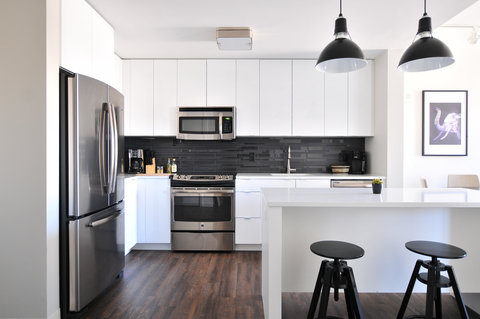
Solving problems
Time to take a look at our fourth and final point in the smart or not criteria, does Samsung’s new smart fridge solve any more problems than the average household fridge?
This part of the analysis is difficult, mostly because it is somewhat subjective. A refrigerator’s primary use is to keep stored groceries cool inside, but that doesn’t mean it doesn’t have other common uses.
For years, the fridge has been seen by many as the center of the kitchen. It’s where mom leaves notes for the little ones and where we keep track of shopping lists until the next trip to the store. A fridge is also a place for children to showcase their latest art projects and report cards. The Family Hub 2.0 does feature all these same capabilities, but with a cold, sterilized facelift.
Simply put, a photo of macaroni art from your six year old on a 21.5” LCD screen doesn’t really carry the same warmth and charm of the real thing.
Smart refrigerator problems
Not only does this smart fridge not improve the experience of tactile notes and lists, it also doesn’t bring new, insightful solutions to other issues within the kitchen. In our list of smart device criteria, the Family Hub 2.0 misses the mark on differentiating itself from the average refrigerator.
Final thoughts
The fridge also has other glaring, non-sentimental issues including the inability to download and install apps outside of the pre-loaded selection. Technology moves quickly and, let's face it, although Pandora might be your favorite way to listen to music now, can you guarantee it will be a decade from now?
Sure, that may seem like a silly example, but it highlights one of the biggest smart refrigerator problems in general: for most people tech upgrades are more frequent than appliance upgrades.
According to Sears, a brand that has been synonymous with home appliances in America for decades, the life expectancy of an average refrigerator is 10-13 years. As the current smart fridge models become outdated and firmware updates cease, is it worth it to shop and buy another new refrigerator to retain the ‘smart’ functionality when your old smart fridge still has another 8+ years of life? That’s an expensive decision smart fridge owners could have to make every couple of years.
Combined with other smart refrigerator problems, I have a hunch that ‘smart’ consumers would likely tell you that’s a decision they’ll skip altogether.
